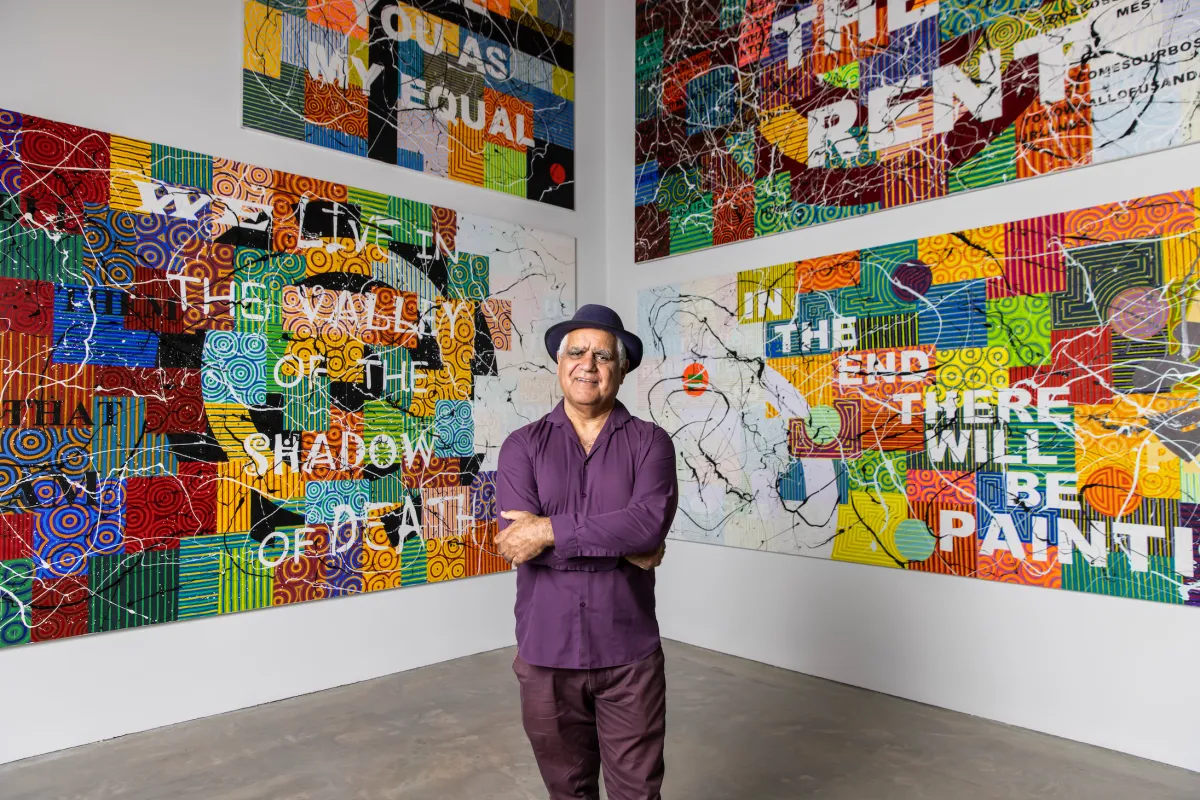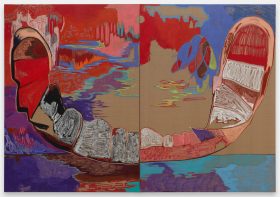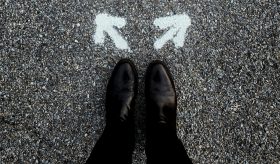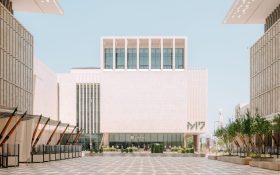Synonymous with Australian art activism, Richard Bell is a provocateur and ardent land rights activist.
A proud Aboriginal man of the Kamilaroi, Kooma, Jiman and Gurang Gurang people, Bell uses humour and wordplay to agitate and question notions of identity, place and postcolonial histories. This week his Embassy project opened in the prestigious Turbine Hall of London’s Tate Modern (20 May to 18 June).
Riffing off a travelling circus-come-military green mess tent, Bell offers up a loaded and layered metaphor with his installation/performance work, Embassy – a space for shared commentary and activism in support of Aboriginal land rights in Australia and, more broadly, against any oppression of Indigenous or minority voices.
Embassy was conceived in 2013 to pay a nod to the Aboriginal Tent Embassy, which was erected in 1972 outside Old Parliament House, in the Australian capital of Canberra. It was the visible and political thorn established by a group of four Aboriginal activists, tired of the government’s denial of land rights and the substandard living conditions for Aboriginal people.
When presented, Bell’s Embassy is typically surrounded by protest signs, whether outside or within art museums or arts festivals. Sometime this is by invitation and, at other times, as with Bell’s presentation at the 2019 Venice Biennale, it is more ‘guerrilla’ in action, passed off as a collateral event.
Embassy was first shown in Melbourne in 2013, and has been exhibited at the Moscow Biennale of Contemporary Art (2013), Performa 15, New York (2015), 16th Jakarta Biennale (2015), Jerusalem Show VIII (2016), Documenta Fifteen in Kassel (2022) and, most recently, at the Kochi-Muziris Biennale in India (2023).
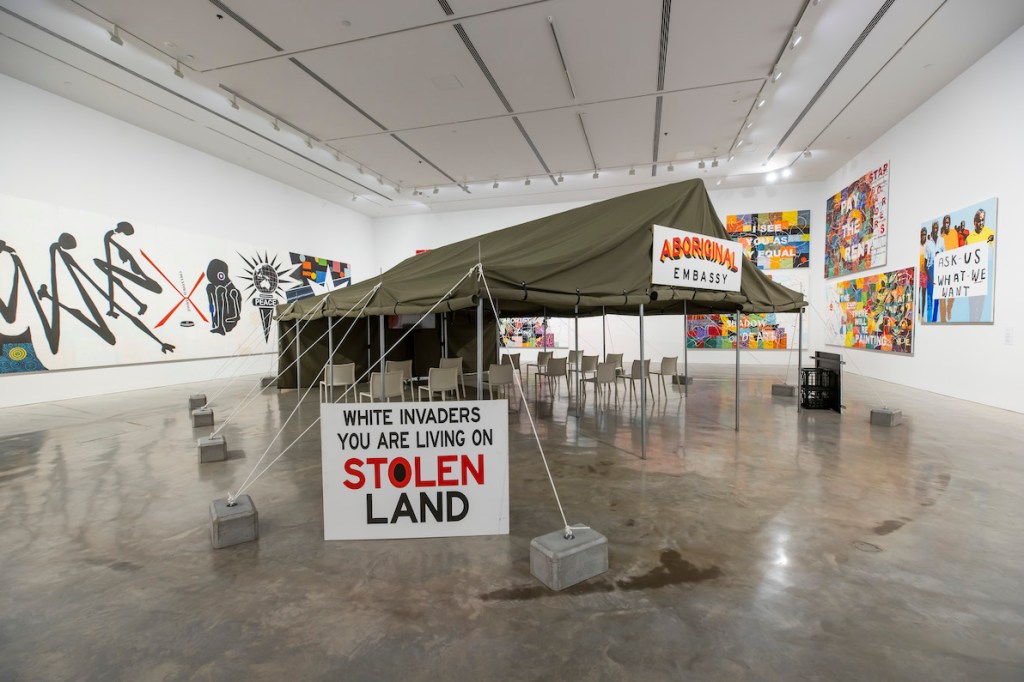
Bell has always envisaged Embassy as a space for cultural sharing and in solidarity with others, one that is inclusive (rather than exclusive), and is more about a shared global dialogue of struggle and determination.
For Tate Modern, alongside Embassy and its associated public program, Bell will present a major work titled, Pay the Rent (UK), across the Turbine Hall Bridge.
The gallery explains: ‘This artwork is a digital ticker of the artist’s calculation of the payment owed by the British Government to Indigenous Australians for use of the country between 1788 and 1901, a number which, with interest included, keeps climbing.’
Suzanne Cotter, Director Museum of Contemporary Art Australia, adds: ‘Richard Bell is one of Australia’s most eloquent artistic voices, whose gently humorous and always incisive work speaks profoundly to our contemporary world. We are delighted visitors to Tate Modern can engage with Aboriginal and Torres Strait Islander perspectives on history, art and culture.’
Read: Q&A Richard Bell: Art and activism 30 years on
Joint acquisition by Tate
Embassy was acquired by Tate, in partnership with Sydney’s Museum of Contemporary Art Australia, in 2017, as part of an ongoing $2.75 million International Joint Acquisition Program, made through a corporate gift from the Qantas Foundation in 2015.
Keith Munro, Director First Nations, Art and Cultures at MCA Australia, says, ‘This exhibit at Tate Modern continues an ongoing dialogue involving thought leaders, artists and changemakers.’
Embassy at Tate Modern will be activated through a series of public events, with Richard Bell in conversation with guest speakers and audience participants. On 26 May (6pm – 10pm) Tate Modern Late will be handed over to Embassy with a program including DJ sets, workshops, talks and films centred on notions of protest.
And on 10 June (11am – 5pm) Tate will host a series of talks, with a particular focus on the challenges that the local Bankside communities are facing, particularly questions around gentrification, social justice and community organising.
For the opening weekend (20-21 May), Bell was in conversation with Australian Aboriginal artists Ghillar Michael Anderson, Megan Cope, Alan Michelson and Sylvia McAdam, as well as Sami activist artists from the Black Cultural Archives, Farrukh Dhondy, Leila Hassan Howe, Emory Douglas, Sofia Karim and Jacob V Joyce.
For more program details, visit Tate Modern.
Visitors are encouraged to take part in these conversations, sharing their stories and experiences. All conversations are documented, forming part of an archive that transcends national boundaries.
